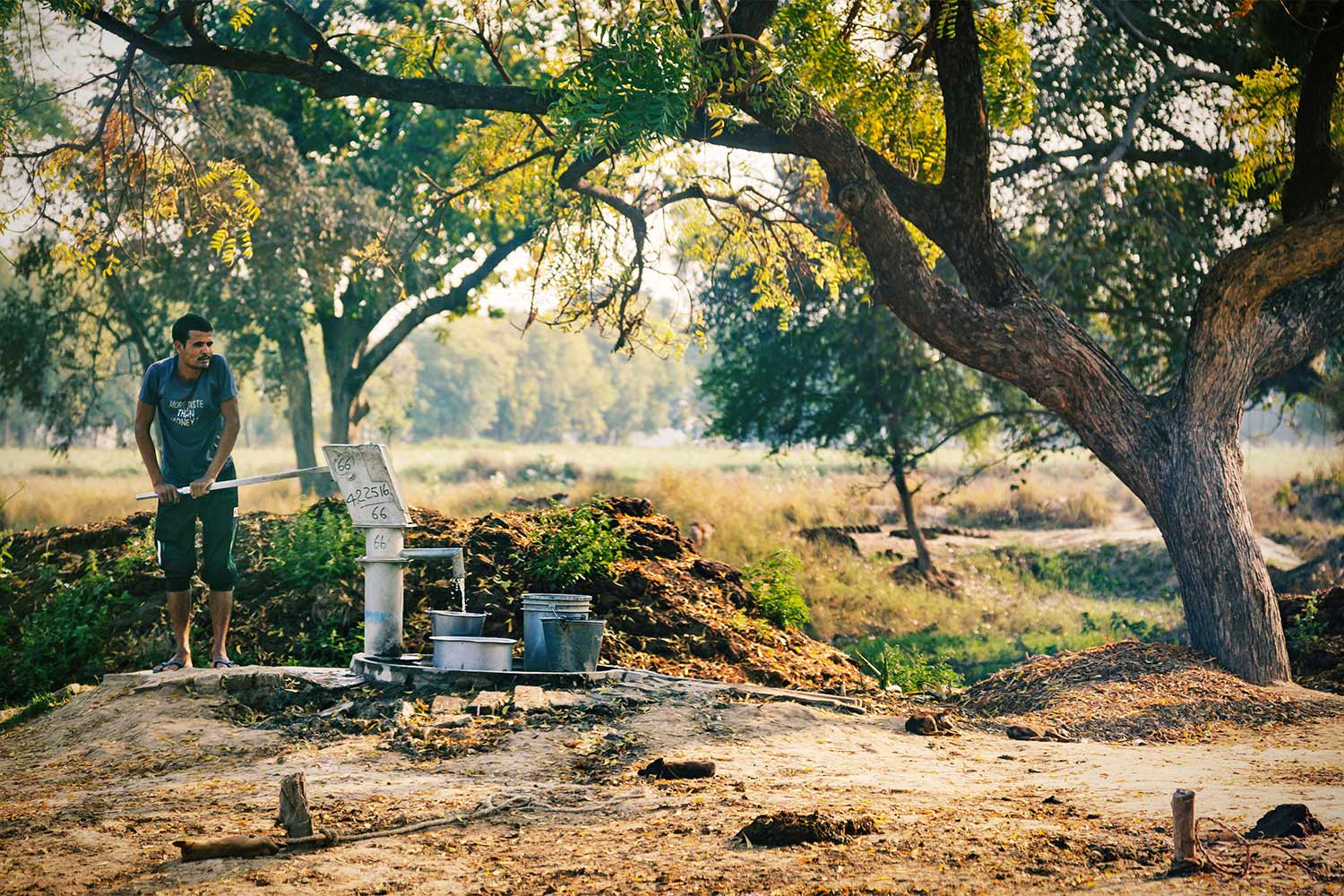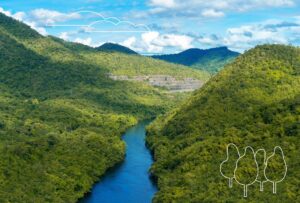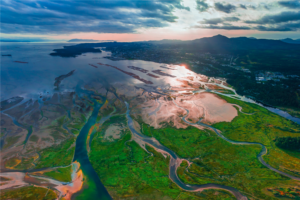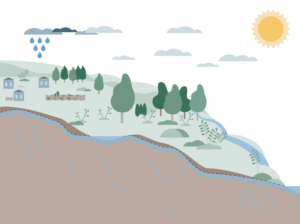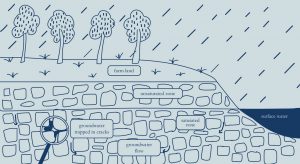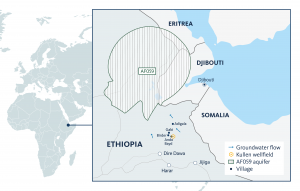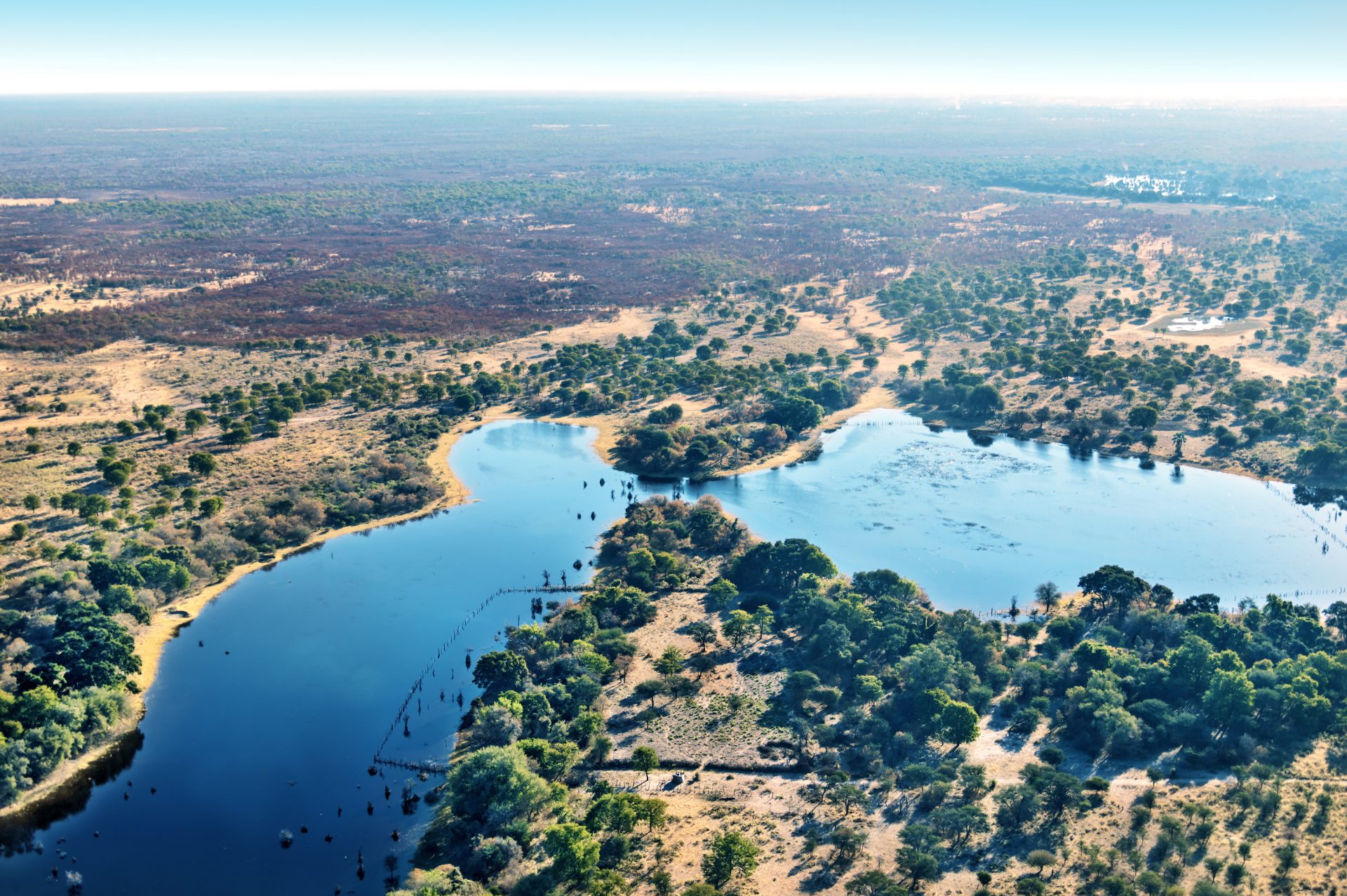Groundwater has been out of sight and out of mind for too long. It is the world’s most abundant freshwater resource and a crucial regulator of water extremes such as floods and drought. When we protect groundwater we save lives and ecosystems, improve health, reduce hunger and tackle climate change all at once. We must therefore increase understanding of groundwater so we can improve its governance and protect this vital resource.
Groundwater makes up 99 percent of all freshwater that is not frozen. It provides nearly half of the world’s population with drinking water and contributes to about half of the global food production. For some 2.5 billion people in the world, groundwater is their one and only source of freshwater.
But the importance of groundwater is not only a question of drinking water and irrigation of crops. Groundwater is, in the words of the 2020 Stockholm Water Prize Laureate, groundwater expert John Cherry, “the Earth’s life support system.”
In 2015, research based on satellite images from the American space agency NASA showed that many of the world’s biggest groundwater aquifers are being depleted at a much faster rate than they can be replenished. The situation may be most critical in India, which relies on groundwater for much of its food production but where the capacity of 54 per cent of groundwater wells are decreasing.
Groundwater is also threatened by pollution from agriculture, manufacturing and fracking. Chemicals such as PFAS are increasingly found in the drinking water in many countries. But the full extent of this problem is not known, since most countries do not monitor their groundwater. This means that the world’s freshwater may be even more limited than we think.
Stay in touch
Are you interested in learning more about groundwater? Sign up to SIWI newsletter and receive latest updates directly into your inbox.
What is groundwater?
Groundwater is essentially the regulator of the freshwater cycle. It acts as a giant sponge that can absorb surplus water and mitigate shortage, making it a vital component in adapting to climate variability. During drought, groundwater sustains rivers, lakes, and wetlands – but only as long as we do not deplete reservoirs, something which we are currently busy doing at an alarming speed in many parts of the world.
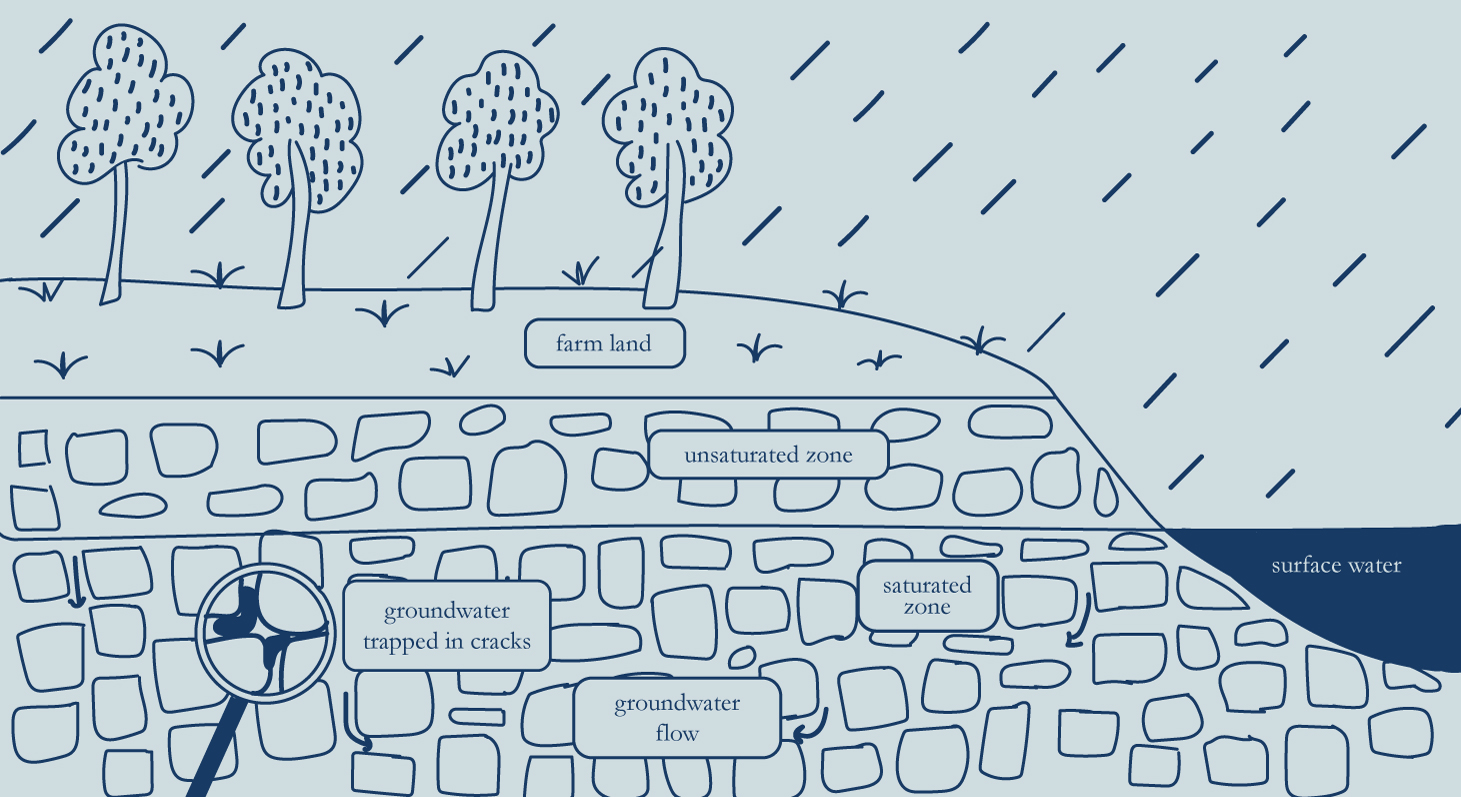
How can we make groundwater more visible?
Groundwater is often referred to as an ‘invisible resource’. Hiding under our feet, it is impossible to tell its presence which affects the way it is used and this common resource is shared between communities and across borders.
We are calling upon all communicators to collaborate with experts and vice versa, to take on the responsibility and use their creativity to make the invisible groundwater visible. Increased awareness and knowledge sharing can inform the need to restore aquifers, the reservoirs of groundwater, and promote sustainable use of groundwater. Here are 7 ways to make groundwater more visible:
Demystifying
Being underground makes groundwater seem “mysterious”. What we can see is the infrastructure needed to extract it. Groundwater is not a flowing river, but water that exists in cracks, pores and fractures. Better visualisations can help to demystify and bust some common myths. For example, what does polluted groundwater look like? Groundwater is not always “pure” and can be unfit for drinking due to presence of naturally occurring arsenic, which is impossible to see or photograph.
Understanding the complexity
Groundwater is the resource, and the aquifer its “host” -both of which need to be protected. The hydrological cycle is only one of the factors that affects how quickly water is recharged after extraction. Contaminated groundwater can take a long time to remediate. Understanding such complex processes can help us to value this invisible resource.
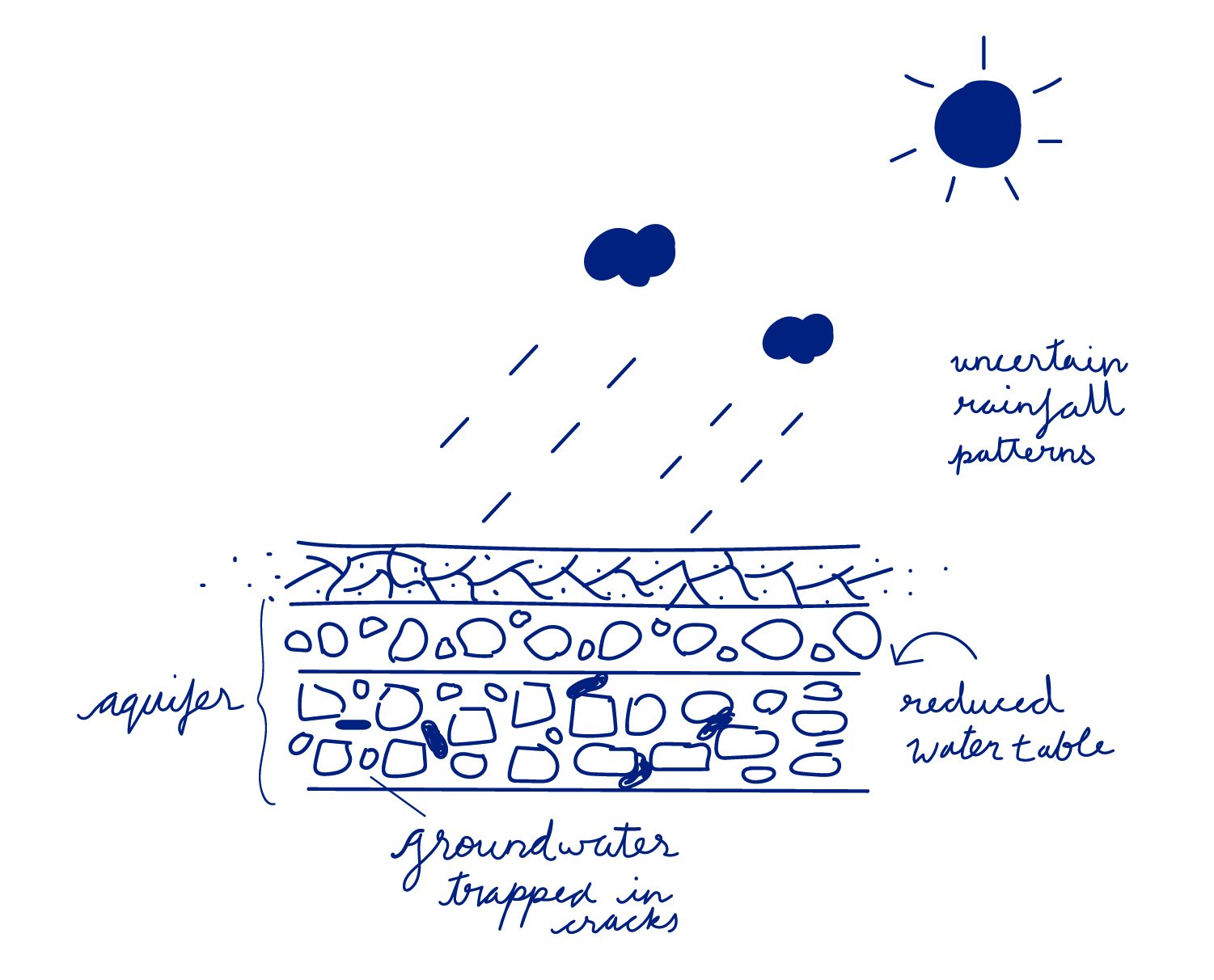
Getting data on ‘hidden’ use
Lack of understanding and data on who uses how much groundwater for what and at which time is missing in most countries. Unknown individual usage and access means that not all water resources are accounted during planning and management. The same is true for aquifers which are shared across borders, exacerbating the risk of power asymmetries.
Assessing the impact of climate change
Climate change is a silent threat to groundwater quality and quantity, and very little is known about its future impacts. Extreme rainfall caused by climate change cannot infiltrate the ground and rejuvenate aquifers. High temperatures increase evaporation and decreases recharge.
Unlocking potential
Harvesting rainwater and investing in structures that enhance aquifer recharge can help to make groundwater use sustainable and improve food security, human health and aquatic biodiversity. This is not only important for regions that have seasonal rain periods, but a way of looking at the underground reservoirs as “banks” that can be used as buffers for dry days.
Highlighting its role for biodiversity
Groundwater is not just for human use but is integral to maintaining streamflow and supporting ecosystems such as wetlands. Over-pumping is already driving biodiversity loss and degrading of groundwater-dependent ecosystems. Making such connections will go a long way in making groundwater visible, and understanding the need to protect aquifers.
Joining hands
Multiple disciplines need to come together to shine the light on groundwater. We need all perspectives and different disciplines – the social scientists, the lawyers, the modelers, and the engineers to pull all the knowledge, and for communicators to make groundwater visible.
Download the illustrated version of those 7 ways to make groundwater visible (PDF)
What is groundwater governance?
Groundwater is often over-abstracted, particularly for irrigation, and its increasing scarcity is coupled with deteriorating quality caused by contamination. It is a complex problem. Not only because groundwater is virtually invisible, but also because many of the contributing factors are thought of as local problems and not as parts of a global threat to groundwater. We can only achieve sustainable groundwater management on a global level with a much more holistic approach.
In places where groundwater resources are relatively abundant and of good quality, they represent vast development potential – a potential which is often overlooked. To fully realize this potential, we need a more robust understanding of groundwater resources and how they are being used and depended upon around the world.
What can governments do to protect groundwater?
With the current approach to groundwater, the world is headed for disaster, according to Dr. John Cherry, who was awarded the Stockholm Water Prize in 2020 for his work with groundwater. Here are five actions governments should take to reverse the trend:
Apply the Precautionary Principle
Recognize that the dire situation for groundwater is a result of many unintended consequences. The Precautionary Principle (PP) must, therefore, be the guiding principle for groundwater governance, which is currently not the case
Shift to cradle-to-cradle production
In today’s current cradle-to-grave manufacturing, groundwater ends up as the grave for harmful chemicals from manufacturing processes and from products. But cradle-to-cradle thinking is becoming more common – and this is the way forward. In a circular economy, no manufacturing processes and products emit chemicals harmful to water.
Change food habits
Nearly all of groundwater depletion and most groundwater pollution result from ‘modern chemical agriculture’. Ecological agriculture is better as it is a form of cradle-to-cradle production applied to food. We should also move away from eating beef. Impose taxes or penalties on groundwater pollution caused by agriculture and eliminate government subsidies that contribute to groundwater unsustainability.

Establish effective groundwater monitoring
Use modern monitoring methods for groundwater levels and hydrochemistry with data transparency in all areas where groundwater is a significant resource. Effective monitoring networks are still rare, but modern cost-effective methods exist, including technology for real-time data recording. In most cases, the data should also be fully available for the public, to view on their smart phones or tablets.
Strengthen groundwater governance
Groundwater depletion and pollution can often be attributed to poor governance, frequently stemming from a lack of knowledge about groundwater. There is a need to make groundwater science more accessible: for example, through the Groundwater Project, and to raise capacity about groundwater governance.
Join the call for action: Download and share the poster with your network
Download the poster “5 ways governments can protect groundwater” (PDF)
Groundwater as a resource
From a development perspective, proper groundwater management is key to functioning water services and public health, particularly in urban environments. Getting it wrong can have serious consequences.
Most of the urban population growth in the world takes place in slums and informal settlements. In such areas, many people draw their everyday water from shallow wells as this is the most accessible and affordable – and sometimes only – solution. The problem is that urban groundwater is usually exposed to high levels of pollutants.
There are often few, or no, institutions tasked with managing urban groundwater reserves. Such institutions are, therefore, urgently needed to establish well-informed, sustainable practices that also take the interests of vulnerable communities into consideration. Fundamentally, good groundwater management is a prerequisite to fulfilling several sustainable development goals as well as the human right to water.
